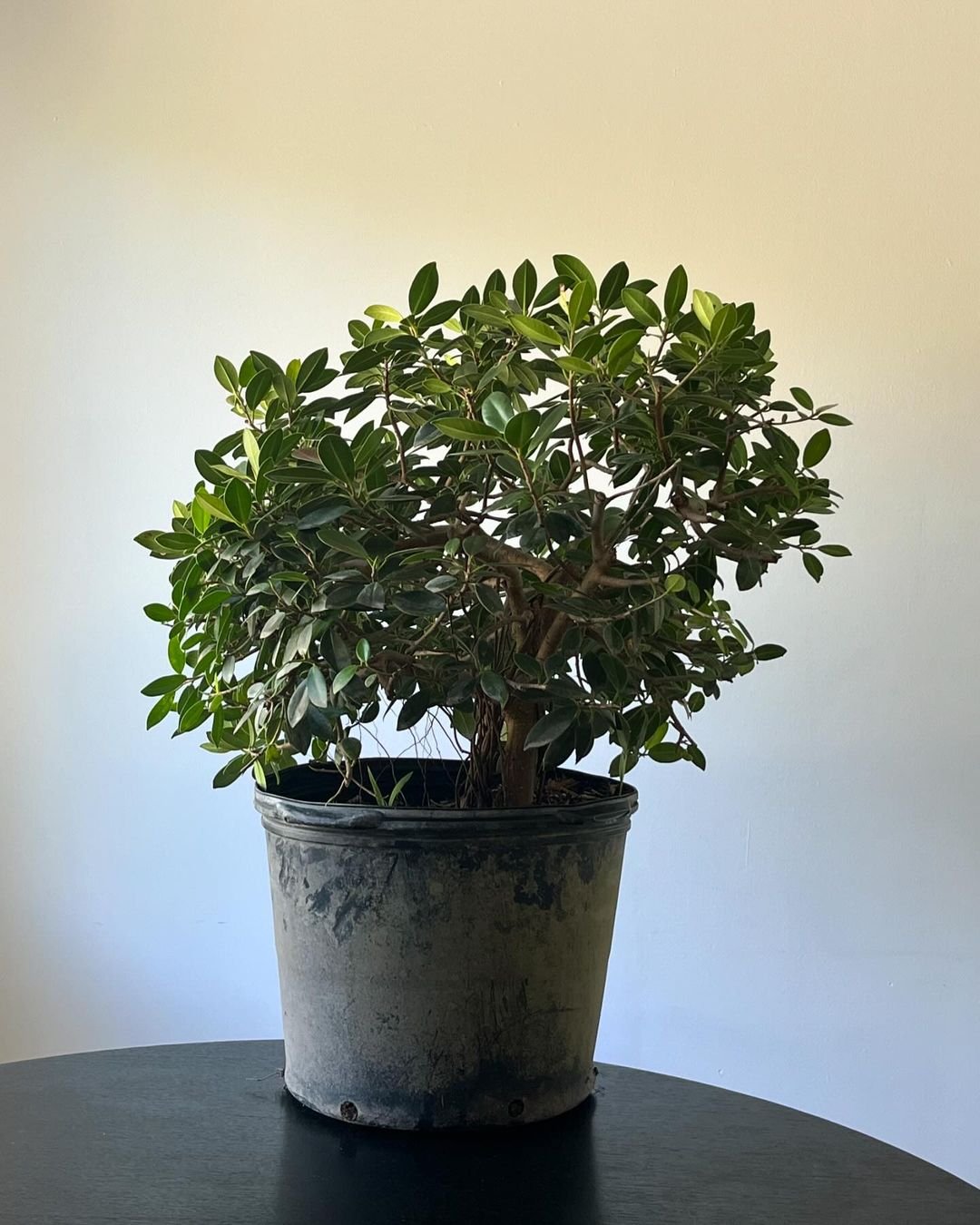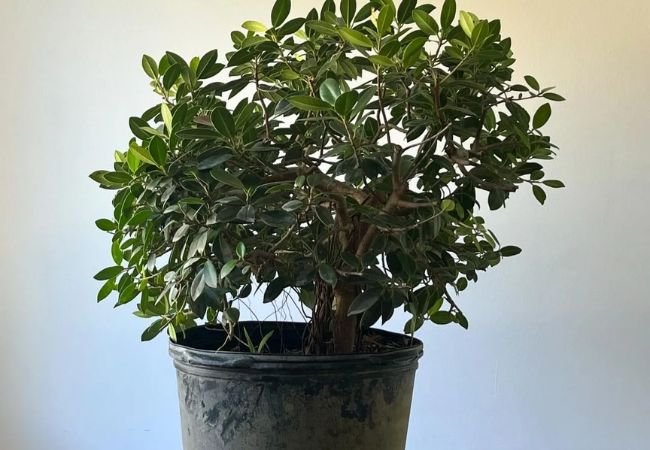Green Island Ficus (Ficus microcarpa ‘Green Island’) is a compact, evergreen shrub known for its dense, rounded growth habit and glossy green leaves. It’s highly adaptable, thriving both indoors and outdoors in suitable climates. This ficus variety is low-maintenance, drought-tolerant once established, and ideal for hedges, borders or as a potted plant.
As a horticulturist with over two decades of experience in tropical and subtropical plant cultivation, I’m excited to share my insights on the Green Island Ficus. This versatile plant has become increasingly popular in landscaping and indoor decoration due to its attractive appearance and ease of care.
Here’s a simple and verified chart with detailed information about Green Island Ficus:
| Category | Information |
|---|---|
| Botanical Name | Ficus microcarpa ‘Green Island’ |
| Common Name | Green Island Ficus |
| Plant Type | Evergreen shrub or small tree |
| Hardiness Zone | USDA Zones 9-11 |
| Sun Exposure | Full sun to partial shade |
| Soil Type | Well-drained, loamy or sandy soil |
| Watering | Moderate; prefers consistently moist soil, but can tolerate some drought once established |
| Growth Habit | Low-growing, spreading shrub |
| Height/Spread | 2-3 feet tall / 4-6 feet spread |
| Special Features | Dense, glossy green foliage, low maintenance, can be pruned into shapes, good for bonsai, container planting, or ground cover in warmer climates |
Introduction to Green Island Ficus

Botanical Information
- Scientific Name: Ficus microcarpa ‘Green Island’
- Family: Moraceae
- Origin: Cultivar of a species native to Southeast Asia and Australia
Characteristics
- Growth Habit: Compact and rounded shrub
- Height: Typically 3-8 feet (0.9-2.4 meters) when mature
- Spread: 3-6 feet (0.9-1.8 meters)
- Leaves: Small, oval, glossy dark green, 1-2 inches long
- Flowers: Insignificant, rarely seen in cultivation
For more detailed botanical information, visit the University of Florida’s IFAS Extension page.
Growing Green Island Ficus
Ideal Growing Conditions
Light Requirements
- Outdoors: Full sun to partial shade
- Indoors: Bright, indirect light
Soil Preferences
- Well-draining, slightly acidic to neutral soil (pH 6.0-7.0)
- For potted plants, use a high-quality potting mix
Temperature and Humidity
- Hardy in USDA zones 9-11
- Prefers temperatures between 60-85°F (15-29°C)
- Tolerates moderate humidity levels
Planting Process
- Choose a location with appropriate light and space for growth
- Dig a hole twice the width of the root ball and as deep
- Amend soil with organic matter if needed
- Place the plant in the hole, ensuring it’s at the same depth as in the container
- Backfill with soil and water thoroughly
- Apply a 2-3 inch layer of mulch around the base, keeping it away from the trunk
For container planting, ensure the pot has adequate drainage holes.
Caring for Green Island Ficus
Watering
- Water deeply but infrequently, allowing soil to dry slightly between waterings
- Reduce watering in winter or during dormant periods
- Avoid overwatering, which can lead to root rot
Fertilizing
- Apply a balanced, slow-release fertilizer in spring and mid-summer
- For potted plants, use a liquid fertilizer monthly during the growing season
- Avoid fertilizing in late fall and winter
Pruning and Shaping
Green Island Ficus responds well to pruning, making it ideal for shaping:
- Prune in early spring before new growth begins
- Remove dead, damaged, or crossing branches
- Shape as desired for hedges or topiary forms
- Pinch back new growth to encourage bushiness
For more on pruning techniques, visit the Royal Horticultural Society’s pruning guide.
Pest and Disease Management
Common issues include:
- Spider mites
- Scale insects
- Root rot (due to overwatering)
Preventive measures:
- Maintain good air circulation
- Avoid overwatering
- Regularly inspect for early signs of pests
For pest identification and management, check the UC IPM Pest Management Guidelines.
Propagation
Green Island Ficus can be propagated through:
- Stem cuttings
- Air layering
Steps for stem cutting propagation:
- Take 4-6 inch cuttings from healthy stems
- Remove lower leaves, leaving 2-3 at the top
- Dip the cut end in rooting hormone
- Plant in a well-draining potting mix
- Keep moist and in a warm, bright location out of direct sunlight
Indoor Care
When grown indoors, Green Island Ficus requires special consideration:
- Place near a bright window, but avoid direct sunlight
- Maintain consistent temperatures and avoid cold drafts
- Increase humidity with a pebble tray or humidifier
- Rotate the plant regularly to ensure even growth
Landscaping Uses
Green Island Ficus is versatile in landscape design:
- As a compact hedge or border plant
- In mixed shrub borders
- As a foundation planting
- In large containers for patios or entryways
- Bonsai or topiary subjects
Environmental Benefits
Green Island Ficus offers several ecological advantages:
- Provides year-round greenery
- Can act as a windbreak or privacy screen
- Helps reduce urban heat island effect when used in landscaping
For more on the environmental benefits of urban greenery, see this EPA report on using trees and vegetation to reduce heat islands.
Green Island Ficus is a versatile and attractive plant that can enhance both indoor and outdoor spaces. Its compact growth habit, glossy foliage, and adaptability make it a favorite among gardeners and landscapers. Whether you’re looking to create a beautiful hedge, add structure to your garden, or bring some greenery indoors, the Green Island Ficus is an excellent choice.
Remember that while this plant is relatively low-maintenance, it does require consistent care, especially when it comes to watering and pruning. By following the guidelines in this care guide, you can ensure your Green Island Ficus remains healthy and vibrant for years to come.
For more information on tropical and subtropical plants, visit the Tropical Plant Database.
For more gardening tips and plant care guides, visit usagardenhub.com.





